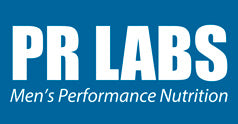Prostate MRI’s: Everything You Need To Know

Did you know that prostate is the most common cancer and the second leading cause of cancer death among men in the United States? But the good news is that prostate cancer is treatable if detected early enough, so men must start to educate themselves about prostate cancer, prostate health, and steps they can take to be more proactive about it...It may just save your life.
Today, there are more ways than ever to have your prostate evaluated as a means of prevention, but an MRI is one of the most effective methods.
Prostate Health & Early Screening Tools
Let’s just do a quick overview before jumping into an MRI for prostate cancer. The prostate is a walnut-sized gland located between the bladder and the penis in front of the rectum. It is a part of the male reproductive system and is in charge of producing semen. It is important for men to maintain a healthy prostate because it affects sexual and urinary functions.
While there are many ways to reduce your chances of prostate cancer - diet, prostate supplements, exercise - one of the most effective ways is through early-screening tools. Screening tests have become critical for men and their prostate health. Prostate cancer can often be found early by testing for prostate-specific antigen (PSA) levels in a man's blood or by a digital rectal exam (DRE) performed by a physician.
If there is a cause of concern, then the physician may order a biopsy or MRI. During a traditional prostate biopsy, a very thin needle is inserted through the wall of your rectum and into the prostate to collect a sample of tissue; this invasive procedure can affect the urinary function that lasts weeks after the procedure. Follow-up biopsies may be needed depending on the results of the first biopsy and involve the same process.
The other option is an MRI-guided biopsy which is completely non-invasive and painless.
What Is A Prostate MRI?
Magnetic Resonance Imaging, or as most of us call it, an MRI, is a large machine that uses magnetic and radio waves together to produce images of soft tissues and structures in the body; in this case, the image produced would be the prostate.
While many other early-detection or early-screening tools are available, many men prefer an MRI because it is a non-invasive alternative to traditional biopsies. The prostate MRI is just as, if not more, accurate at detecting prostate cancers as a traditional prostate biopsy because it also offers additional information. The prostate MRI procedure can also detect how advanced the cancer is and if it has spread to other parts of the body. The entire MRI process is painless and non-invasive and typically takes about 30-45 minutes to complete.
So are there any risks involved with an MRI prostate evaluation? Prostate MRI’s pose practically no risks to the average male when safety protocols are followed.
After your MRI, a radiologist will evaluate the images and send them back to your physician. Once your doctor has had a chance to review the MRI results, they will typically set up a follow-up appointment to discuss the MRI.
Prostate Cancer Prevention
Prostate health is a major component of men’s health, and while there is no proven method to prevent prostate cancer completely, there are lifestyle changes that you can make to reduce your chances.
Two major ways to reduce your chances of prostate cancer come from your diet and exercise habits. Exercising regularly can help you maintain a healthy weight and can also reduce your risk of heart disease. The other way is by adopting healthier food options as well. Below is a list of healthy foods that you can incorporate into your diet that may reduce your chances of prostate cancer:
- Cruciferous Vegetables - Veggies like kale, cauliflower, cabbage, broccoli. These vegetables are all high in antioxidants, minerals, and vitamins that may help to lower inflammation.
- Antioxidant-Rich Berries- Most berries are high in antioxidants and can help prevent free radicals caused by environmental factors that cause oxidative stress.
- Omega 3’s - Incorporating a moderate amount of “good fats” from foods like avocado or fish.
Supplementation may also be a great place to start if you really want to elevate your prostate health. If you are looking around for prostate supplements for men, we have developed a powerful one that contains antioxidants and natural ingredients that promote normal prostate and urinary function. Prost-P10x is a Urologist-Formulated Natural Prostate and Urinary Health Support supplement.
Join Our Community & Save 10% Off Your First Order
We’ll send you a coupon code for 10% off your first order. Stay on our list
and we’ll keep you updated with tips for optimal health, new product launches, sales, and more!




